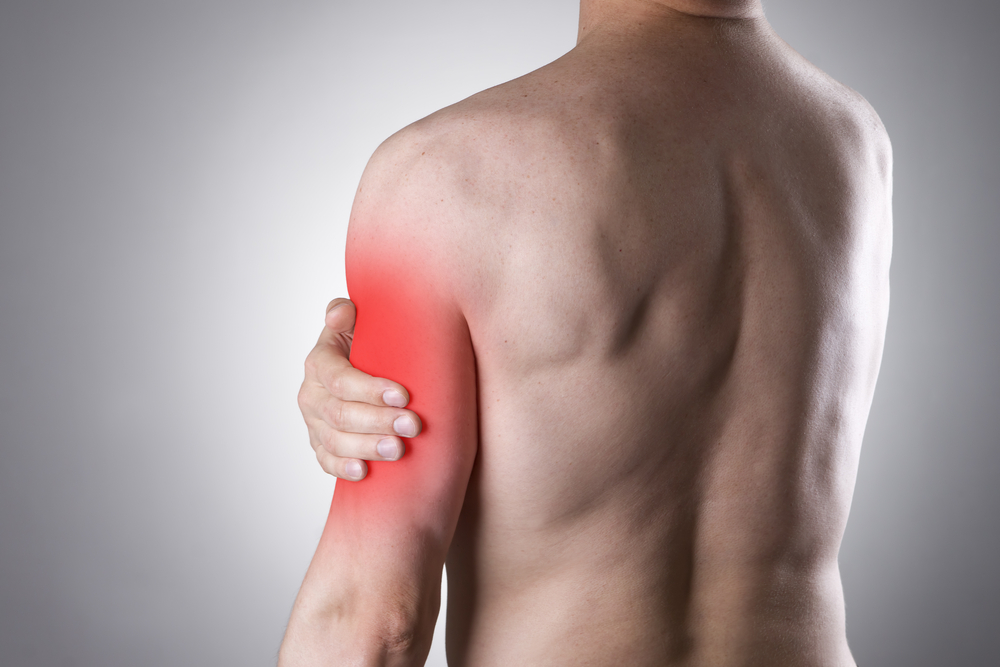
by Nick Anderson | Jul 27, 2022 | Fitness
Does sore muscles mean muscle growth?
If you’ve lifted weights before, you’ve felt sore muscles before.
You woke up the next morning after your workout feeling like you got hit by a Greyhound bus that exclusively serves passengers who are world class heavyweight boxing champions.
You’ve thought to yourself, “Was my workout that hard, or do I just have the flu?”
You’ve also thought to yourself, “This soreness must mean my muscles are growing so much.”
In this article, we’ll uncover the truth about muscle soreness.
You’ll learn why muscles get sore, whether they need to be sore for a good workout, and how you can be sure that your muscles are growing.
Why Do Muscles Get Sore?
One of the reasons muscles get sore, is through strength training, you are causing microscopic tears to your muscle fibers.
The microscopic tears cause an inflammatory response, which is a response needed to heal those tears.
These tears are in part, what causes muscle growth. Along with other factors such as progressive overload, mechanical tension, etc.
But microscopic tears aren’t the only thing that cause muscle soreness.
Some of the pain also comes from the connective tissue that holds muscles together, not the actual muscles.
Why muscles get sore is multifactorial. While the above are the main drivers of muscle soreness, it can also be caused by training specificity, training experience, nutrition, genetics, recovery, sleep, stress, and many other factors.
Some people get more sore than others. Sometimes you will be sore, sometimes you won’t.
It’s all highly individual and variable.
Delayed Onset Muscle Soreness (DOMS)
Delayed onset muscle soreness is pretty self explanatory when you break down the term.
24-72 hours after you workout, the muscles you worked feel sore.
DOMS is experienced worst by those who are new to weight training.
This is your body’s alarm reaction to introducing a new stimulus.
Every single person who’s ever picked up a weight and done their first leg day, has experienced feeling like you’ve been bitten on the thigh by a diamondback rattlesnake.
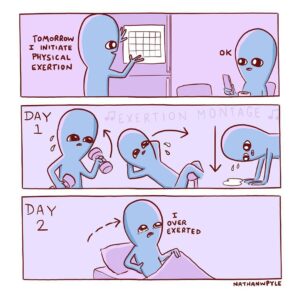
Luckily, the more you do it, the easier it gets. And the less DOMs you experience over time.
The extreme soreness you feel as a beginner to strength training is your body’s way of saying “Why the hell are you doing this to me?”
Once your body starts to understand this as the new norm, it stops having a temper tantrum.
That doesn’t mean you magically won’t get DOMS ever again. But the effects will be less severe.
Does Sore Muscles Mean Muscle Growth?
I have an online client, whom when we first started working together, would always tell me about how sore her first trainer used to make her.
“These workouts were so great, I could barely even walk up the stairs after them. I felt soooo good after.”
So I asked her, “So did you get good results?”
“Yeah! You have no idea how sore I felt, it was incredible.”
It took her a while to realize that I wasn’t asking how sore she was, I was asking about her overall results.
I took a more direct approach. “When you’re time with her was done, what kind of changes did you notice? Did you feel stronger? Leaner? Did you build more muscle?”
She thought long and hard about it, but realized the answer was ultimately, no.
Because muscle soreness is not directly one of the factors for muscle growth.
So let’s talk about what does matter for muscle growth.
1. Progressive Overload
Progressive Overload is a fancy way of saying over time, you are increasing the demands on your muscles. Whether that is through increasing how much weight you lift, how many reps you do, improving form, etc.
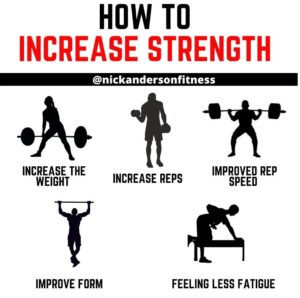
For example, if you are able to do a bicep curl for 10 reps with a 15lb dumbbell, and then you can do it for 12 reps, that’s progressive overload. From there, you are able to do a 20lb dumbbell for 10 reps, that’s progressive overload. The more you are able to apply this principle over time, the more you will see muscle growth.
2. Mechanical Tension
Mechanical tension is the forces that act on your muscles. This can be through gravity, or through a load like with a dumbbell, barbell, kettlebell, etc.
Mechanical tension occurs through the eccentric, concentric, or isometric phase of a muscle contraction.
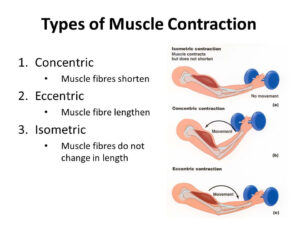
3. Muscle Damage
We’ve already touched on how causing microscopic tears in a muscle allows it to have an inflammatory response, and then grow.
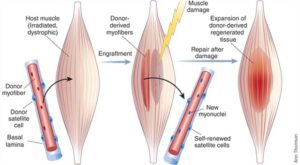
Like I’ve said earlier, this contributes to muscle soreness.
But I’ve also said that you won’t always be sore after workouts.
So if you are causing muscle damage, but not feeling sore, you are achieving muscle growth over time.
So while muscle soreness can be associated with muscle growth, as a result of the 3 topics listed above, it is not a requirement for muscle growth.
If you’re not applying these three principles, you’re not achieving muscle growth.
Final Thoughts: Does Sore Muscles Mean Muscle Growth?
As long as you are applying the principles of progressive overload, mechanical tension, and muscle damage, your muscles will grow.
That may or may not mean that they will get sore as a result.
Sometimes, they will, sometimes they won’t.
But chasing the feeling of soreness is not a valid metric to indicate whether you are inducing muscle growth.
If you have any questions, drop them in the comments below.
Much love,
Nick
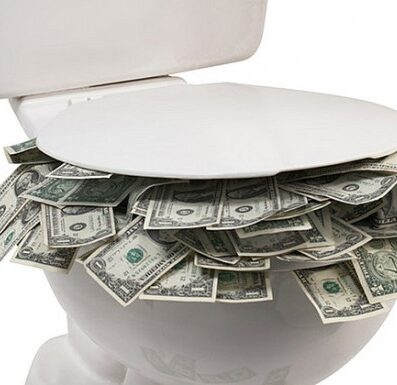
by Nick Anderson | May 31, 2022 | Fitness
If you look on social media, magazines at the grocery store checkout, or ask your creepy uncle Frank, they all have some fitness products they swear by.
Some products for fitness are great, but the vast majority are not backed by any science, or weak scientific evidence at best.
Today, I’m going to tell you which products to not waste your money on.
And as a bonus, I’ll give you some recommendations as to what may be worth your money, depending on your individual situation.
Let’s get into it.
Fitness Products To Not Waste Money On
Fat Burning Supplements
Fat burners have a very misleading name. The name implies that they burn fat. But they don’t, because the only way to get rid of body fat is by being in a calorie deficit.
Anyone who has claimed to lose body fat whilst taking a fat burning supplement also was in a calorie deficit.
Think about it, do you logically think it’s possible to take a fat burning supplement, eat like garbage, and lose fat because you’re taking a pill or a powder?
That’s not how it works.
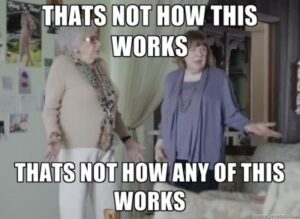
Well, good news to the supplement industry, because most fat burning supplements don’t actually claim to melt the fat from your body (though some do make this bold, and inaccurate claim).
The supplements work in other ways to aid in your fat loss.
For example, one thing they do is elevate your blood pressure to attempt to increase how many calories you burn throughout the day.
To me, increasing your blood pressure, which is a firm marker of health, just to burn more calories seems like a pretty stupid idea. Not to mention the overall amount of calorie burn is miniscule.
When really, you could just go outside and take a walk and burn probably the same amount of calories that you would from the elevated blood pressure, and improve your health markers while doing it. Not to mention, walking is free.
Fat burning supplements also claim to curb your appetite. Now, if you’re really struggling with appetite, this can be helpful in the short term.
But it doesn’t teach you anything to keep body fat off in the long term, because now you are relying on a pill to keep your appetite down.
Which is kind of like walking on crutches forever and never learning to walk on your own two feet.
If you really want to keep hunger down, you can use some easier, and more cost effective tricks to Keep Yourself Full In A Calorie Deficit.
Again, the tricks in the article linked above are going to help you improve your health markers, instead of relying on a pill.
Fitness Products To Not Waste Money On
Waist Trainers
Waist trainers are believed by some to aid in weight loss.
But as we learned above, the only thing that leads to weight loss is being in a calorie deficit.
And as far as I can tell, putting a piece of cloth around your waist doesn’t change how many calories your taking in or burning.
It does provide you a “slimmer” look… while you are wearing it.
Similar to the archaic idea of the corset which was popular in the 1800s.
The idea is to literally compress your body so tight that you can barely breathe.
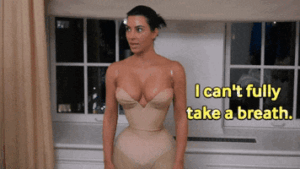
Compressing yourself to skinniness is not the way to go about it.
Again, there are no long term benefits, and as soon as you remove the waist trainer, literally nothing has changed.
There are also some health risks associated with waist trainers
It’s very well agreed upon among the actual experts of the fitness industry that waist trainers actually weaken your core/abdominals over time.
Since they are so tightly cinched to your body, it makes it almost impossible for you to use your core muscles while wearing it. Over time, this has some diminishing effects to your core strength.
Fitness Products To Not Waste Money On
Greens Supplements
Greens supplements and promoted by social media fitness influencers as a way to get vitamins, minerals, and all those good micronutrients in. And there’s one thing they are right about. Those are very important
But you know what else is a great way to get micronutrients in? Eating an actual, real life vegetable.
Now for the crowd out there who says “well Nick, I don’t like eating vegetables, they don’t taste good.”
I get it. But have you ever tried a greens supplement? Because they taste like liquified Purina Dog Chow.
I guarantee you that eating some broccoli or a carrot once in a while is better than plugging your nose and trying to force this bile-like substance down your gullet.
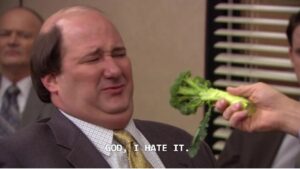
Just eat some vegetables instead, it’s going to be more cost effective. And bonus, if you’re in a calorie deficit, vegetables are going to help you feel full, because you can fit a lot of vegetables in your stomach for a very low calorie amount.
Fitness Products To Not Waste Money On
MLM Products
Beachbody, Optavia, Plexus, Arbonne, Herbalife, ItWorks, these are all examples of “health and wellness” multilevel marketing companies who’s job it is to sell you their product, then recruit you to start selling their product as well.
In my opinion, these products are very overpriced, and you can purchase similar products from non-multilevel marketing companies for a fraction of the cost.
Plus, you don’t have to worry about someone trying to recruit you to sell the product as well.
Because according to the FTC, 99.6% actually lose money in mutli-level marketing after expenses.
For more information about Anti-MLM, you can check out the podcasts From Huns to Humans, or Life After MLM.
Bonus: Fitness Products That Are Actually Worth The Money
Gym Memberships
Having a place to exercise is crucial if you want to get fit and be healthy. Gym memberships are fairly inexpensive, depending on what gym you go to.
Make sure to tour the facility before you sign up, and ensure it has everything you need. Some gyms will even off a day pass for you to workout there before you sign up to see if you like it.
Gym Equipment
If you’re the type of person that likes to work out from home, then investing in some equipment for a home gym can be a great option.
This gives you the convenience of never having to leave your house to workout, which can sometimes be a barrier.
Some starter product recommandations:
Adjustable Dumbbells, Resistance Bands, Foam Roller
As you get a little more advanced you can consider:
A barbell set with bumper plates, a squat rack.
Some Supplements
I want to first point out that there is no such thing as a necessary supplement. The bulk of your progress is going to be made up of the consistent daily actions that you make to move your “fitness needle” in the right direction.
Meaning things like what you’re eating, whether or not you’re exercising, drinking enough water, sleeping well, etc.
These are the determining factors in your health and fitness, not whether or not you take a supplement.
That being said, some supplements can make a small impact which can be helpful. But they are never your end-all-be-all.
Creatine
Creatine Monohydrate is the most well researched supplement on the market. It’s also one of the most inexpensive.
It can improve your performance when strength training, and improve your recovery between sets. It’s also very safe to use.
Just make sure you’re getting Creatine Monohydrate, and not some other form. The only ingredient in the type you buy should be Creatine Monohydrate. And don’t pay a lot for it.
It’s not supposed to be expensive, here’s the one I use
Omega 3
This one can be a good one for overall health. Omega-3 fatty acids are typically found in fish. And in western culture, fish is not often a regular part of our diets.
Now, if you’re regularly eating fish, you 100% do not need this supplement, because you are already getting it from food.
It’s important that we get a good ratio of Omega-6 and Omega-3 fatty acids. Omega 6 is found more in meats, and in todays culture, we are getting a much higher concentration of Omega 6.
It’s much more common to see a 20:1 ration of Omega-6 to Omega 3. A more ideal range would be a 4:1. This ratio will help reduce chronic inflammation, and lead to a longer, healthier life.
If you’re not getting enough fish in your diet, you may want to consider supplementing with this.
Multivitamins
You may also want to consider taking a multivitamin. This can help fill in any nutritional gaps you may not be getting in your diet already.
This is really only needed if you do have any vitamins/minerals you are regularly missing out on in your diet. If you have any kind of vitamin deficiencies, this can be a big help.
If you don’t, you don’t need it.
Hiring A Fitness Coach
Hiring a fitness coach can be one of the absolute best things you can do to optimize your fitness. No matter your fitness level, from absolute beginner to highly trained athlete, a coach can absolutely change the game for you.
You’ll have someone who has your best interests at heart, and has the expertise to help you get the best results.
Someone to write programs specifically for you based on any limitations you may have, and based on the exact goal you want to achieve.
You’ll also have someone to hold yourself accountable to, that way if you fall of the wagon, they can help pick you back up and put you back on, so you don’t get left behind and die of dysentery.
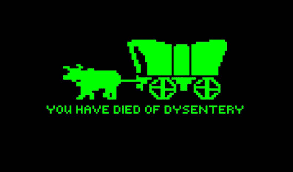
– If you’re looking to be able to strut in your workouts confident, proud, and ready to go.
– If you’re looking for someone to take all of the guesswork out of it for you,
– If you’re looking to learn how to include all of your favorite foods, while still reaching all your fitness goals.
Then apply now for online coaching.
Otherwise, I’m always here for any questions you have.
Much love,
Nick
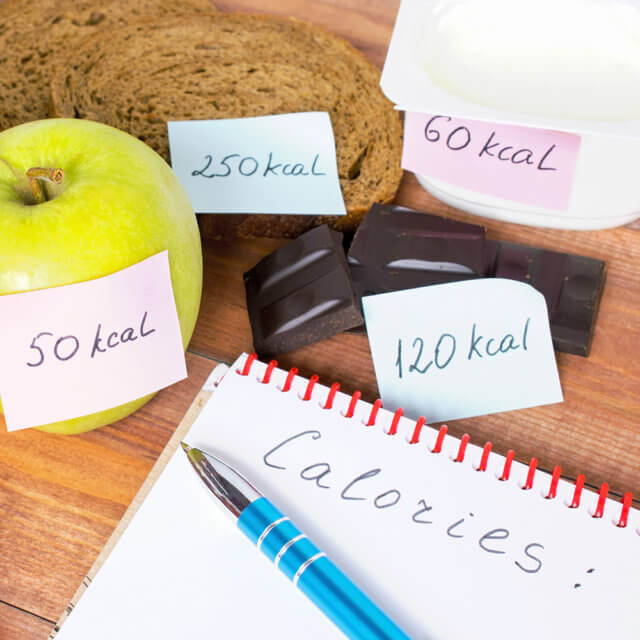
by Nick Anderson | May 11, 2022 | Fitness
Calorie counting can seem like a daunting process, and most people’s biggest fear is that they won’t have enough time to do it. So I thought I’d provide some tips on how to make counting calories easier.
I get it, sometimes it’s hard, and downright frustrating.
But don’t worry, because I got your back.
All you gotta do, is read this whole article.
No skipping, no skimming.
Read the article left to right, top to bottom, then read it backwards, and then one more time while standing on your head.
I guess you can skip the last part if you really want to.
Okay so we got a deal? Let’s do it.
How To Make Calorie Counting Easier
Does Calorie Counting Work?
For some, calorie counting is a great tool to bring some awareness of how much you’re actually eating.
For others, calorie counting can lead down a dark hole of obsessing about every gram of spinach, and if you go one calorie over your target, it triggers a complete breakdown.
The key is knowing which type you are.
So if you are the type of person that feels anxious by the idea of tracking their food intake, as to what it might do to your relationship with food, then this option might not be for you.
If you struggle with an eating disorder, calorie counting is not for you. And your first priority should be working on that. I highly suggest visiting psychologytoday.com and seek out a licensed mental health professional to help you.
However, if this is not an issue for you, than calorie counting can be an amazing tool for not only weight loss, but also increased strength, and gaining muscle.
Just ask my online coaching client, Kate
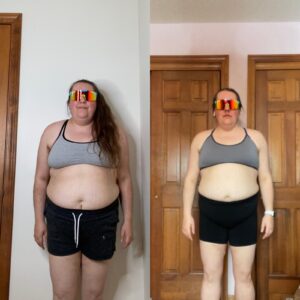
Who’s lost 30 pounds over the last 9 months working with me, all while counting her calories.
Thankfully, she wears those douchey sunglasses in every progress picture, for the lulz.
You can also ask my online coaching client, Heidi.
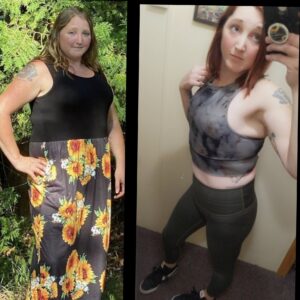
Who’s lost 45 pounds over the course of about 10 months working with me. Again, all while counting her calories.
And she used a lot of the strategies I’m going to outline below. And she still enjoyed some pizza from time to time.
Unfortunately, she didn’t wear any douchey sunglasses though.
Calorie counting works so well because weight loss comes down to being in a calorie deficit.
Weight loss, gain, or maintenance ultimately comes down to a simple equation of energy balance.
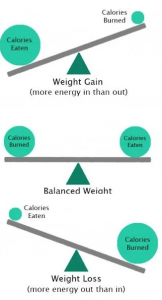
And if you are tracking your calories, this gives you a direct view as to whether you are taking in the correct amount of calories for your goals.
When you want to save money, it’s a good idea to keep track of a financial budget.
It’s a lot easier to save money if you are keeping track of your finances, and where your money is going.
It’s a lot easier to hit your goals if you keep track of your calories, and what you are eating.
How To Make Calorie Counting Easier
Tip #1 Don’t Change Things Up All The Time
Important to remember, that this is an article on how to make calorie counting easier.
So before you pushback at this and say “Nick, I don’t want to to eat the same thing all the time.” I get it.
But it is going to make it easier.
The more you change up your diet, and have different recipes and foods, the harder tracking calories is going to become.
The cool thing about MyFitnessPal is that it remembers your habits.
If you’re having similar foods, you can literally copy and paste them from one day to the next.
I’m the type of person that has the same breakfast every day.
And every morning, when I start tracking my calories, I swipe from the right to “Add Breakfast From Yesterday”
Not only does this save you time in opening the app, and selecting the foods that go in.
It also saves you time on making the decision of what to make for meals, and what to buy at the grocery store.
It creates a habit, and once a habit is formed, it’s easier to stick to.
Tip #2 Foods With Barcodes Can Be Your Friend
“But Nick, calorie tracking takes so much time.”
How much time does it really take to open your phone and scan a barcode?
You did it with restaurant menus for all of 2020, and it took you all of 7.3 seconds.
The great thing about foods with a barcode is, you know exactly how many calories are in the package.
Not only that, but there is little to no preparation involved.
Take this yogurt for example
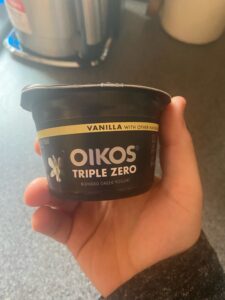
It’s as easy as scanning the barcode, opening the lid, inserting spoon, and increasing enjoyment.
You don’t have to worry about how much is in each serving, because it’s already portioned out.
Okay fine, sometimes it’s more complex than that.
Let’s take this package of rice for example.
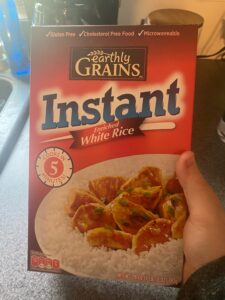
It’s still as simple as scan the barcode, follow instructions, enjoy delicious rice within a minute.
Food with a barcode are convenient. And if you’re worried about how much time it’s going to take to count your calories, convenience is key.
Tip #3 It Pays To Plan Ahead
I’ve already touched on how it pays off to eat similar foods, and how this helps you to not have to think too much about what you’re eating.
So if you already have an idea of how you’re day is going to look, you can log it all ahead of time.
Either the night before, or morning of, start entering what you plan on having into MyFitnessPal, that way you don’t have to do it throughout the day.
So now, you’re day is already setup ahead of you, all you have to do is follow the plan you’ve laid out.
Sure, it takes a little front end work to set this up. But it shouldn’t take you any more than 10 minutes of your day, and it leads to less time worrying about decision making.
If you end up deviating from the plan a bit, you can always go back and edit, you’ve still got a great groundwork set up for yourself.
How To Make Counting Calories Eaiser
Tip #4 Estimate When You Have To
But hold on, Nick! I just got my white New Balance sneakers all polished up, and my wife and I are going out to Outback Steakhouse tonight to split a Bloomin’ Onion!
No problem, search for the entrée, appetizers, drinks, etc., you’re having today, most chain restaurants have their calories in MyFitnessPal.
Going out to the local town diner? No problem there either.
Search for a dish that’s relatively close to what you had. It may be a few calories off in either direction, but at least you’re close.
A lot of people get deterred from calorie tracking when they go out to eat. You don’t have to let it come to a grinding halt the minute you want to go to lunch with your co-workers at the office.
You can stay on track and go out to eat.
It may not be perfect, but it at least gives you a bit of accountability.
Tip #5 Eat The Right Amount Of Calories
The most common reason people feel restricted around calorie counting isn’t from the counting of calories itself.
It comes from the over-restriction of calories.
Many people trying to lose weight will set their calorie target to 1,200 calories, which you should not be doing.
If you set your calorie target too low, it’s going to be nearly impossible to stick to.
So if you really want to make calorie counting easier. Find the correct amount of calories for your goal.
You can do that by getting my Free Calorie Calculator, and find out what your goal calorie target is.
How To Make Counting Calories Easier

How To Make Calorie Counting Easier: Final Thoughts
Okay so there you have it. If you want to make calorie counting easier, keep it simple.
The less you can overcomplicate everything, the more successful you’re going to be.
I hope you enjoyed this article, and if you have any thoughts, please leave a comment below. I’d love to hear from you.
Much love,
Nick
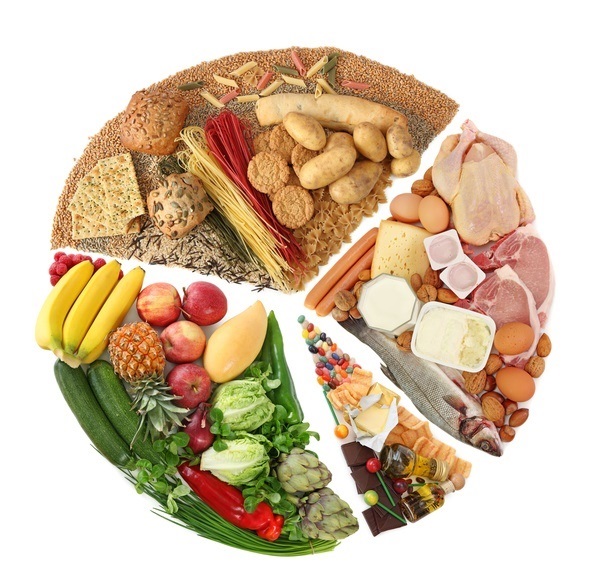
by Nick Anderson | Apr 18, 2022 | Fitness
WTF Is A Macro?
WTF is a macro anyways?
You may have heard the phrase “I’m counting my macros.” Or “This fits my macros.” Or my personal favorite “Ice cream fits my macros.”
Food is made up of 3 macronutrients. Proteins, carbs, and fats. The balance of these things combine to make up the three main nutrients our body uses for energy.
In this article I’m going to lay out
- The difference between calories and macros
- What protein is, what it does for you, and how much you need.
- What carbs are, what they do for you, and how much you need.
- What fats are, what they do for you, and how much you need.
- Whether you should worry about counting calories or macros
WTF Is The Difference Between Macros And Calories?
In a sense, they are the same. In another sense, they are not.
Each macronutrient contains a certain amount of calories per gram.
1 gram of protein contains 4 calories.
1 gram of carbohydrates contains 4 calories.
1 gram of fats contains 9 calories.
So macronutrients are part of the calories we eat, broken down a little further, and a little more specifically.
A calorie is a unit of measurement for how much energy is in a food. When we count calories, we are counting the amount of energy we get from our food.
When we count macros, we are counting how the energy from food is broken up.
Each macronutrient does different things for our body, and all three are important for our daily life and energy.
The Three Main Macronutrients
Protein
Why is important?
Protein’s primary job is to repair your body. We most commonly think of it as used for our muscles, and to support our sick gainz.

Eating adequate protein is going to help you recover from your workouts better, and aid in muscle growth.
It also aids in retaining muscle mass, or in some cases, even gaining muscle when you are in a calorie deficit.
Protein is really quite a magical macronutrient for fat loss in particular, because it does two things that supports fat loss.
For one, it helps you feel full longer, as it is the most satiating of the three main macronutrients.
And secondly, it has a higher thermic effect than the other macronutrients. Which means you burn more calories from digesting it than with carbs or fats. You burn about 30% of the calories taken in from proteins.
Where can I get it?
Meat, seafood, eggs, protein shakes, greek yogurt, cottage cheese.
These are some of the best sources of protein.
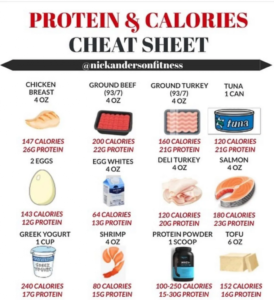
Beware of some commonly touted “good” sources of protein, that aren’t actually good sources of protein.
Some common ones are beans, peanut butter, and nuts.
While I’m not saying you shouldn’t eat these foods… peanut butter happens to be the nectar of the gods. They just don’t happen to be good protein sources.
Let’s use peanut butter as an example.
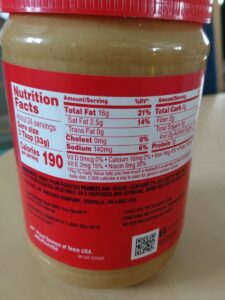
With 16 grams of fat, 8 grams of carbs, and 7 grams of protein, based on the math we used earlier of how many calories are contained per macronutrient, we can see this is primarily a fat source.
16 grams of fat x 9 = 144 calories from fat
8 grams of carbs x 4 = 32 calories from carbs
7 grabs of protein x 4 = 28 calories from protein.
13% of the calories are coming from protein. Not a great protein source after all. However, still delicious.
If you’re looking for a little more in depth answer, you can check out my article on How To Get More Protein In Your Diet
How much protein should I eat?
The minimum recommendation for protein is about 0.36 grams of protein per pound of bodyweight.
So if you weight 200 pounds, you’d need at least 72 grams of protein.
However, this recommendation is to avoid a protein deficiency.
Since you’re on a fitness website, my guess is you’re probably trying to figure out how much protein you need to stimulate muscle growth and recovery.
The general recommendation here is between 0.7g – 1g of protein per pound of bodyweight.
So our hypothetical 200 pound individual would need 140-200 grams of protein per day.
Carbohydrates
Why are they important?
Carbs are the body’s main, and preferred source of energy. After you eat carbs, your body breaks it down into glucose, otherwise known as blood sugar, which your body uses for energy.
This is why if you’ve ever tried a low carb, or no carb diet, you probably felt sluggish, or cranky, or outright Incredible Hulk angry.
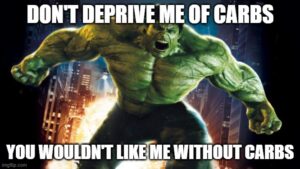
Where can I get it?
Fruit, vegetables, starches, bread, grains, pasta, processed foods.
Carbs are plentily available in food.
And there’s no shortage of them to go around.
How many carbs should I eat?
Technically, you can live without carbs, and the body can convert dietary fat into a fuel source.
With that being said, you can also charge an iPhone with a potato as an electricity source, but all the same, I’ll stick to using an electrical outlet.
The real answer to how many carbs you should eat is… it depends.
If you’re training very hard in the gym, or an endurance athlete, it’s important for you to set this number on the higher end.
If you do fine with a low carb diet, and are not constantly thinking about Pop Tarts every 12 seconds while doing it, then you can set this on the lower end.
For most people, I’d generally recommend for 45-65% of your daily calories to come from carbohydrates.
To figure out this number for yourself, you’ll need to find an adequate calorie range for you to fall into.
You can do that by getting my Free Calorie Calculator, and find out what your goal calorie target is.

One you’ve got that squared away, take the number you’ve been given for calories, and multiply by 0.6 for the high end, and 0.4 for the lower end. Then divide by 4.
For example, if you have a calorie target of 2,400. 2,400 x 0.6 = 1560. 1560÷4 = 360 grams for the high end. 2,400 x 0.4 = 960. 960÷4 = 240 grams for the lower end.
Again, if you function well off a lower carb diet, that’s okay and you can go lower. But for most people, I don’t recommend it. You’ll get much more energy and food satisfaction out of not restricting carbs.
Fats
Why are they important?
Fat is an essential macronutrient, and your body cannot survive without it. It aids in the absorption of vitamins, hormone production, immunity, body tissue health, and metabolic support. There’s also strong evidence to support cardiovascular protection, and alleviate symptoms of depression. Yeah that’s right, eating fats make you less depresso espresso.
Where can I get it?
Dairy, nuts, oils, meats, some seafoods, and basically anything fried and delicious.
How much do I need?
Just like with carbs, it depends.
The main thing is you want to consume at least 15% of your total calories from fat.
Above, I’ve already laid out your guidelines for protein and carbs, whatever’s left over is reserved for your fat intake.
The Fourth Macronutrient: Alcohol
Why is it important?
It’s not. You can live a perfectly healthy, and happy life without alcohol.
However, if you choose to indulge, it can make you seem more confident, while also making you look like a complete idiot.
It can increase your levels of fun at parties, while leaving you with a raging morning hangover.
It has the capability to make you puke, shit yourself, and piss yourself all at the same time.
But anywho, alcohol contains calories, so that’s why it gets the honor of being the “fourth” macronutrient. 1g of alcohol contains 7 calories.
Where can I get it?
If you’re under 21, you can’t
Otherwise, beer, liquor, wine, or Grandpa’s “cough medicine”

How much do I need?
Depends. Are you in for a game of charades with your boring neighbors? Then maybe a bit more than usual.
Counting Macros Vs. Counting Calories
If you’re trying to reach a certain physique, or performance goal, counting calories and counting macros are both viable options.
No matter what, losing weight, maintaining weight, or gaining weight comes down to one thing. Calories in vs. calories out.
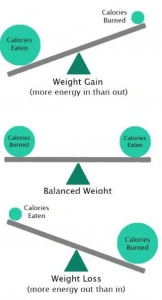
But if you completely ignore macronutrients, your goals may suffer.
For example, if you ignore protein, it’s going to have a significant impact on muscle growth and recovery.
No matter what your goal, I’d recommend to keep track of protein.
For fat loss, you can either worry about counting macros, with the total caloric content of your macros adding up to you being in a calorie deficit (as you found with my calorie calculator that you downloaded earlier).
Or you can just worry about counting calories and protein. Make sure your calories are within the range, and you’re getting 0.7-1g of protein per pound of bodyweight.
Macros are a little more regimented and complex. If you’re up for the challenge, it can be worth it.
If you like to keep it simple, I’d go the calories and protein route.
Final Thoughts: WTF is a macro?
So now you know wtf a macro is.
You know that it is a more detailed breakdown of the energy that goes into our body.
And you know the 3 types of macronutrients, plus the bonus fourth, which you had a lot of in college.
With that being said, if you have any questions, please ask. The comments are open below, or you can shoot me an e-mail at [email protected]
I’m also taking clients for 1:1 online coaching.
If you’re looking for a little more guidance into what you should be eating for macros, and how to actually hit them, I’m here to come up with a nutrition plan for you. That way you never hit a plateau, and achieve all of your fitness goals. And you can do it from absolutely anywhere in the world.
Much love,
Nick
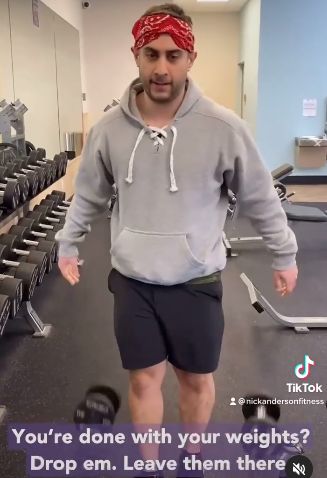
by Nick Anderson | Mar 9, 2022 | Fitness
The gym is a placed filled with both written, and unwritten rules.
Whether you’re stepping foot into the gym for the first time, or are a hardened veteran, it’s always good to know the rules of gym etiquette.
Even if you feel like you know all the rules, or what you should do at the gym, read this.
Because it’s very clear, that not everyone knows the rules (or they just blatantly choose to not follow them).
So don’t skim around, don’t skip through.
And don’t be a Jim Doosh.
Gym Etiquette Rule #1: Follow The Written Rules
Most gyms have some rules listed. Some more than others, some have no rules.
But first and foremost, always follow the rules of your gym.
Most gyms have at least a re-rack your weights rule, which we will touch on later in the article. Some get even more in depth.
Take Planet Fitness for example.
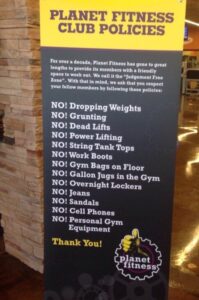
Planet fitness has a lot of rules.
They get a lot of flack for some of their rules, and not everyone agrees with them.
But remember this: you are at their establishment.
If you had rules in your house, and a house guest didn’t like them, how would you feel if people start disobeying them?
Bottom line: If you don’t like the rules, and refuse to follow them, go somewhere else.
Gym Etiquette Rule #2: Leave Things How You Found Them
This one seems obvious, but it is the most broken rule of all time.
In the gym I work at, we have two dumbbell racks, that are on opposite sides of the gym.
There are different dumbbells on each rack, so you know which ones belong where.
Every single morning when I walk in, the first thing I do is go right to the dumbbell rack in the back of the gym.
Bring the 17.5 pound dumbbells that I know are going to be left under the rack, over to the place they belong on the other rack.
Because the same guy comes in every day, takes those 17.5 pound dumbbells, brings them over to the wrong place, and leaves them in the wrong place.
The gym staff is not your mom.
They aren’t there to pick up after you.
Put things back where you found them.
That includes putting your dumbbells back on the rack in the correct place, taking the plates off the bar and putting them back where they belong, and taking your plates off the machine.
Gym Etiquette Rule #3: If You Touched It, Wipe It Down
Not wiping down your equipment is a health risk. Especially in a peri/post-pandemic age. You want to do as much as possible to stop the spread of germs.
Health risks aside, it’s gross. No one wants to sit down on a bench that has a sweat stain that is the exact shape of the back of your head. Or worse, the exact shape of your butt.
Gyms either have wipes, or spray and paper towels for you to wipe things down.
This is not limited to just the things you sit on. Also wipe down your dumbbells, barbells, cable attachments. If you touched it, wipe it.

Gym Etiquette Rule #4: Don’t Talk To Someone In The Middle Of Their Set
There’s nothing worse than being just about to go for a new personal record at the gym, and then Chatty Cathy comes up to you and starts talking about their kid’s hockey practice.
It’s okay to strike up a conversation with someone at the gym.
But remember, some people will be receptive to this, and other’s won’t be.
Good rule of thumb, if someone has headphones on, they probably don’t want to talk.
Regardless of how friendly you are, and someone else may seem however, if someone is in the middle of their lifting, do not talk to them.
If you really feel the need to talk to someone, or feel like trying to strike a conversation up, wait until that person has finished their set.
Gym Etiquette Rule #5: Respect Personal Space
The gym isn’t the New York City subway.
There’s is plenty of space in there, so you don’t need to get right next to someone to go do your workout.
Find your own space to do your workout.
Whether it’s a at the squat rack, a bench, or somewhere near the dumbbells for some standing work.
Take up your own area, and make that your bubble.
And don’t go into other people’s bubbles.
And definitely don’t touch anyone else in the gym without consent.
Gym Etiquette Rule #6: Don’t Stand Directly In Front Of The Dumbbell Rack
This is the worst offense. If you grab a pair of dumbbells to do curls, shrugs, raises, whatever exercise you choose to do.
Take a step back.
Make sure you leave room for others to get in and grab dumbbells.
Otherwise people will be standing behind you waiting to grab the dumbbells you are blocking.
This also goes for any type of row.
If you’re doing a single arm row, don’t use the dumbbell rack as a place to put your supporting hand on.
Be courteous, and go use a bench.
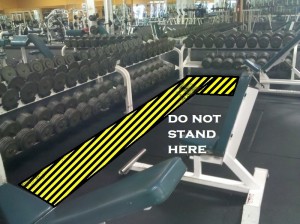
Oh, and definitely don’t shadow box directly in front of the rack.
Gym Etiquette Rule #7: Don’t Stare At People
Look I get it.
I know people are in the gym, working on themselves.
Maybe you really are impressed with someone’s lift, their form, or you really like the way their butt looks.
Don’t stare.
It’s rude, it’s inappropriate, and you’re probably making that person very uncomfortable.
This one especially applies to men staring at women in the gym.
It is a very real problem that women experience.
The gym is not the place to try and pick up a date. It’s not a bar, and it’s not Tinder.
It’s somewhere for people to go in, have their own personal space, work on themselves, and get out.
If a conversation strikes up, then that’s great, go with it.
But please don’t go out of your way to try to find a one night stand with someone at the gym.
That’s icky.
Gym Etiquette Rule #8: Have Good Hygiene
I know you’re about to go to a place where you’re going to sweat.
But don’t walk in there smelling like a dumpster.
Especially if you’re working with a trainer.
A little deodorant goes a long way.
That’s All Folks
There you have it, some simple rules to have good etiquette at the gym, so you can be respectful, and not a Jim Doosh.
Any questions, I’m always here.
Much love,
Nick
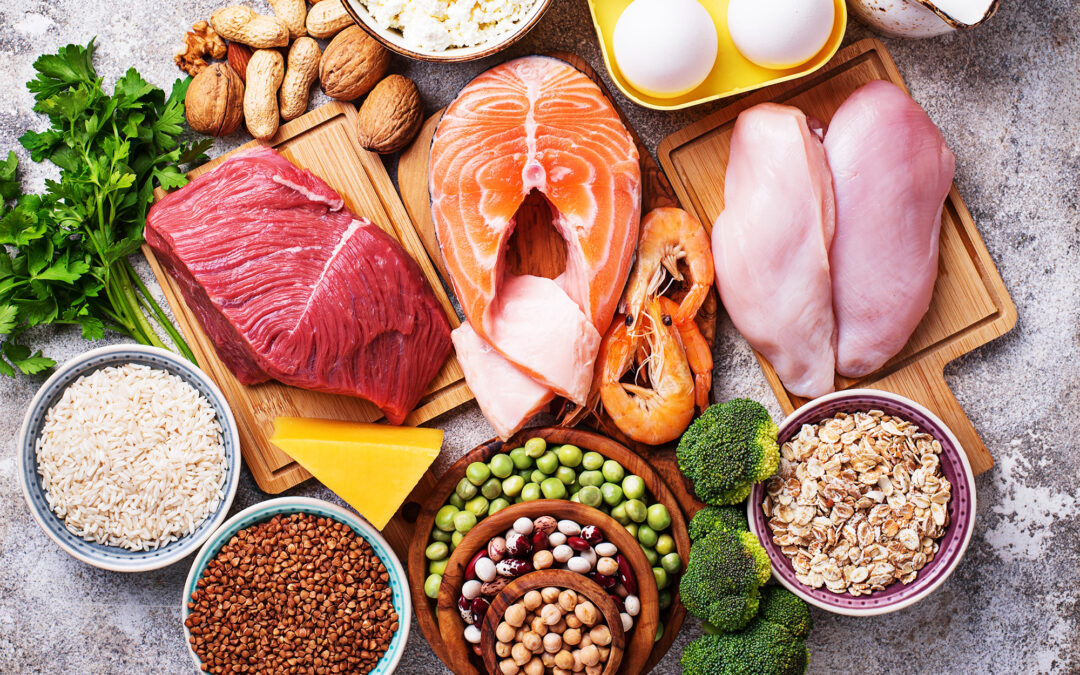
by Nick Anderson | Feb 28, 2022 | Fitness
So you want to get more protein in you diet.
There’s about a million and a half reasons for a high protein diet.
If you’re trying to lose body fat, eating more protein in your diet is going to help you retain muscle, and lose only fat.
If you’re tying to build muscle, this is going to massively (no pun intended) going to help your recovery.
So how do you make sure you get enough protein in your diet to get all those juicy protein benefits, and juicier protein farts?
In this article, I’m going to give you some simple tips to make it easier for you to get more protein in your diet.
How To Get More Protein In Your Diet
Tip 1: Eat Larger Portions Of Protein
If you’re struggling to get enough protein in your diet right now.
This is my simplest and easiest trick that I implement with my online coaching clients.
Here’s how you do it.
Take an inventory of the protein you are generally eating at meals.
Let’s create a sample menu here.
Meal 1: A 2 Egg Omelet with cheese and vegetables – Approximately 13 grams of protein
Meal 2: A Turkey Sandwich with 4 oz of deli turkey meat – Approximately 20 grams of protein
Meal 3: A grilled chicken breast with potatoes and broccoli – Approximately 22 grams of protein
Meal 4: A protein shake – Approximately 20 grams of protein.
This totals to a measly 75 grams of protein.
Now at the end of the day, you’re going to be scrambling to find some high protein snacks to get that number up.
But here’s the truth, you don’t need more snacks.
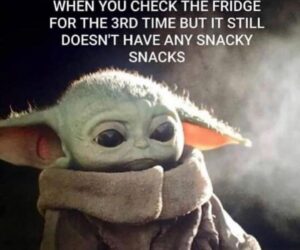
What if we took all those serving sizes and doubled them?
Let’s take the omelet. We can add some liquid egg whites to your whole eggs to get double the protein there.
Your turkey sandwich, stack that Bad Larry with 8 ounces of turkey.
Slap two chicken breasts on your plate for dinner.
Last but not least, use a double scoop of protein powder for a thick shake.
You’ve now doubled your protein intake, without having to change anything besides portion sizes.
You’re still eating the same foods you already enjoy.
How To Get More Protein In Your Diet
Tip 2: Eat The Protein On Your Plate First
You feel more full from eating protein than you do from carbs and fats.
And protein is generally the least satisfying, from an enjoyability standpoint.
So many people will put the protein on their plate, with good intentions, and then throw half of it out because they were too full to finish it.

Then it winds up in the garbage along with the vegetables you left rotting in your crisper drawer.
A surefire way to avoid this, is dive straight into that protein first.
If you’re trying to get more protein in your diet, you want to quite literally prioritize it by eating it off your plate first.
How To Get More Protein In Your Diet
Tip 3: Know Your Protein Sources
There’s a big difference between a food that is dominantly protein, and one that is dominantly either carbs or fats, and has tagalong proteins.
When trying to get more protein in your diet, you want to prioritize the dominantly protein rich sources.
Here’s a list:
Dominantly Protein Sources
Chicken Breast, 4oz ≈ 147 calories, 26g protein
Ground beef/Ground Turkey, 4oz ≈ 160-200 calories, 21-22g protein
Pork Tenderloin, 4oz ≈ 120 calories, 23g protein
Tuna, 1 can ≈ 120 calories, 21g protein
Deli Turkey, 4oz ≈ 120 calories, 20g protein
Egg whites, 4oz ≈ 64 calories, 13g protein
Salmon or other fish, 4oz ≈ 180 calories, 23 protein
0% Greek Yogurt, 1 cup ≈ 240 calories, 17g protein
Shrimp, 4oz ≈ 80 calories, 15g protein
Protein Powder, 1 scoop ≈ 150-250 calories, 15-30g protein
Tofu, 6oz, ≈ 152 calories, 16g protein
Cottage Cheese, 1 cup, ≈ 160 calories, 22g protein
Tempeh, 4oz ≈ 170 calories, 22g protein
Foods That Are Predominantly Carbs/Fats, But Have Some Tagalong Proteins
Peanut Butter
Nuts
Beans
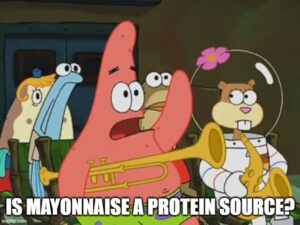
Now I’m not saying you can ever have peanut butter, nuts, or beans ever again.
These are great foods, but when you’re filling your plate with protein, you’re not going to be filling it with peanut butter as your protein source, since it’s mostly a fat source.
A great way to tell if your food is predominantly protein is to check the macronutrient ratio.
Unfortunately, this isn’t as simple as seeing which macronutrient has the most grams in the food.
To find out how the percentage of each calorie per macronutrient, divide each calorie amount by 90, then multiply by 100.
For example:
- 27 fat calories / 90 calories x 100% = 30% of calories from fat
- 52 carb calories / 90 calories x 100% = 57% of calories from carbs
- 12 protein calories / 90 calories x 100% = 13% of calories from protein
Foods that are mostly protein will have at least 50% of calories from protein.
Consider these your high protein sources, and prioritize these.
How To Get More Protein In Your Diet
Tip 4: Use Protein Shakes
One of the most common questions I get asked is whether you need to get protein from natural sources.
The answer is that it doesn’t matter.
Protein is protein.
And a convenient, and cost effective way to get protein in is with a protein shake.
Now we just spent some time talking about tagalong macronutrients.
So when you’re choosing a protein shake, I want to offer some factors to consider.
Make sure your protein shake is mostly protein
If your shake has 17 grams of carbs, 2.5 grams of fat, and 17 grams of protein, it’s not mostly protein.
You’re getting a lot of extra calories from it that aren’t protein.
Which isn’t inherently bad, but if you’re trying to focus on protein intake, it’s a lot easier to get those carbs and fats through other sources.
When they’re sneaking into your protein shake, you’re adding extra calories that don’t need to be there.
You can just find a shake that is mostly protein.
How To Get More Protein In Your Diet
There you have it.
No magic tips to ingest protein through osmosis, or without doing any work.
But use these tips, and it will make the process a lot easier.
Much love,
Nick





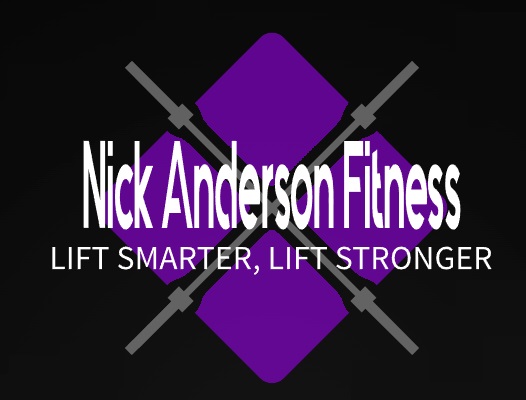











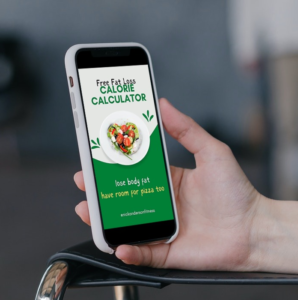 Find Out How Many Calories Your Body Needs
Find Out How Many Calories Your Body Needs













